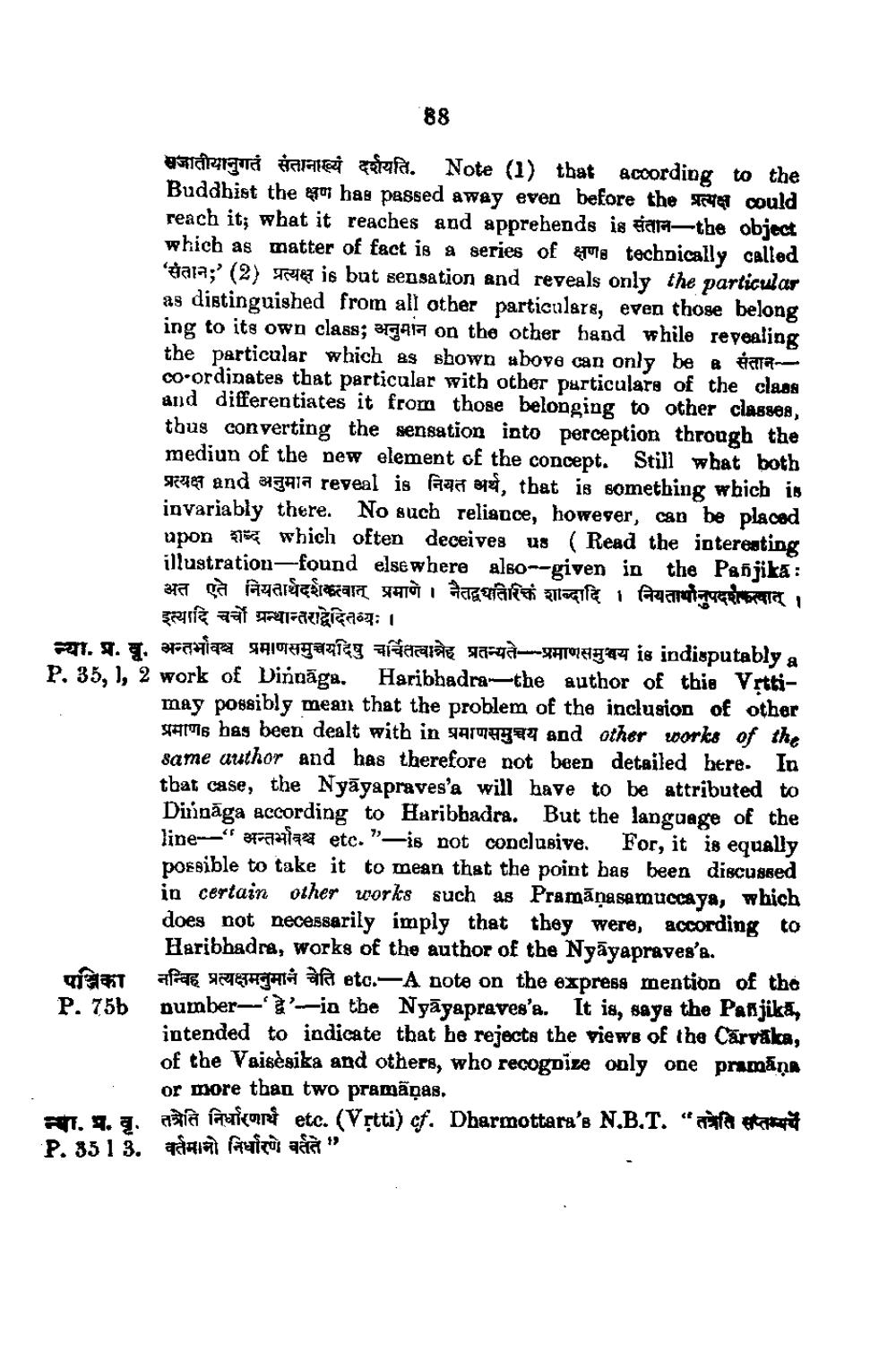________________
पञ्जिका P. 75b
88
न्या. प्र. वू. अन्तर्भावश्च प्रमाणसमुच्चयदिषु चर्चितत्वान्नेह प्रतन्यते - प्रमाणसमुचय is indisputably: P. 35, 1, 2 work of Dinnaga. Haribhadra--the author of this Vṛttimay possibly mean that the problem of the inclusion of other As has been dealt with in 4 and other works of the same author and has therefore not been detailed here. In that case, the Nyayapraves'a will have to be attributed to Dinnaga according to Haribhadra. But the language of the line-aania etc. "-is not conclusive. For, it is equally possible to take it to mean that the point has been discussed in certain other works such as Pramanasamuccaya, which does not necessarily imply that they were, according to Haribhadra, works of the author of the Nyayapraves'a.
21. 4. q. P. 3513.
सजातीयानुगतं संतानाख्यं दर्शयति. Note (1) that according to the Buddhist the " has passed away even before the could reach it; what it reaches and apprehends is eam-the object which as matter of fact is a series of s technically called ';' (2) is but sensation and reveals only the particular as distinguished from all other particulars, even those belong ing to its own class; aga on the other hand while revealing the particular which as shown above can only be a ra~ co-ordinates that particular with other particulars of the class and differentiates it from those belonging to other classes, thus converting the sensation into perception through the mediun of the new element of the concept. Still what both प्रत्यक्ष and अनुमान reveal is नियत अर्थ, that is something which is invariably there. No such reliance, however, can be placed upon which often deceives us (Read the interesting illustration-found elsewhere also--given in the Pañjika: अत एते नियतार्थदर्शकत्वात् प्रमाणे । नैतद्वद्यतिरिकं शाब्दादि । नियतार्थानुपदर्शकत्वात् । इत्यादि चर्चे ग्रन्थान्तराद्वेदितव्यः ।
नन्विह प्रत्यक्षमनुमानं चेति etc. - A note on the express mention of the number--in the Nyayapraves'a. It is, says the Pañjikā, intended to indicate that he rejects the views of the Carvāka, of the Vaisèsika and others, who recognize only one pramāņa or more than two pramaņas.
aðíà fuori etc. (Vṛtti) cf. Dharmottara's N.B.T. वर्तमानो निर्धारणे वर्तते "
a
CE
'तत्रेति सप्तम्यर्थे




